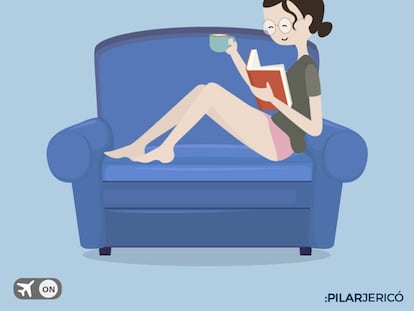How to best manage the six seconds that can change your life (for the worse)
We all have buttons that can be pushed, causing an exaggerated response, but with training we can learn to control our brains

No doubt that at some point you have done something in the heat of the moment and then you’ve later regretted it. Maybe you’ve responded quickly to an email that’s upset you, or said the first thing that came into your head in response to an unfortunate comment. Whatever it was, it wasn’t properly thought through.
Between this inflammatory response and our ability to reason there is a gap of at least six seconds. Let’s look at how our brain works and what we can do to push the pause button in such circumstances.
There are two differentiated parts in our brains, to put it simply: the cerebral cortex, which we use to reason; and the limbic system, where the brain processes emotions. The latter is where the brain amygdala is found, which is fundamentally responsible for registering automatic responses in the face of threats, such as flight, fight or immobility.
The pause button stops us from opting for the first reaction that comes into our heads during those first six seconds
When something awakens an intense emotion, our amygdala becomes inflamed and we respond automatically, without thinking too much. That’s to say, we answer the email angrily without evaluating whether that is the most adequate response.
The reason for this is evolutionary. In the cave-dwelling days this response could save us from a mammoth, but now it doesn’t make too much sense if the response is caused by a message from our boss. But that’s the way we are. We all have a button that can be pushed, and that provokes an exaggerated response. Logically, the threshold for that button to be pushed is different for everyone. There are those who fly off the handle for the slightest thing, and those who can swallow a lot more. Depending on our age, our personality and the training that we have, we can substitute the button for another: the pause button.
The pause button stops us from opting for the first reaction that comes into our heads during those first six seconds. Said button can be trained by using a number of different techniques, with the idea being that the cerebral cortex takes control as soon as possible. How do we press it? The first key is to divert attention. Instead of repeating to ourselves the offense that we appear to have taken, we need to divert our attention to our body, such as, for example, feeling our feet on the floor or focusing on our breathing. The ideal approach is to be aware of your breathing, which should be deep and in the abdomen. That way we can distract our minds and help to deactivate our amygdala. Another technique, one that our grandmas used to tell us, was to count to 10. In some cases, you might need to count up to 100, or even go for a stroll, because once again, physical exercise can help us to focus on other things.
A lot of the stupid things we do are down to our emotional intensity during the six seconds the amygdala has control over us
The pause button is also activated when we stimulate our cerebral cortex. This can be done by asking questions such as: What were they trying to say? What prompted that person to say that to me? These questions can distract us from an automatic response. On other occasions, they can help to “simulate the response.” If an email has bothered you, write out your response, but don’t send it. Leave it in your drafts folder for a day. Once that time has passed, you will most likely lower the inflammatory tone. It also helps to talk to someone to get it off your chest, and for them to offer you another perspective.
And finally, the most developed response is to contemplate the emotion without judging it. This is achieved by daily meditation and is, possibly, the best way – but also the one that requires the most training.
In the end, a lot of the stupid things we have done in our lives are down to our emotional intensity during the six seconds that the amygdala has control over us. As the years pass our responses are subdued, but we can also achieve this if learn a range of techniques to push the pause button.
English version by Simon Hunter.
Tu suscripción se está usando en otro dispositivo
¿Quieres añadir otro usuario a tu suscripción?
Si continúas leyendo en este dispositivo, no se podrá leer en el otro.
FlechaTu suscripción se está usando en otro dispositivo y solo puedes acceder a EL PAÍS desde un dispositivo a la vez.
Si quieres compartir tu cuenta, cambia tu suscripción a la modalidad Premium, así podrás añadir otro usuario. Cada uno accederá con su propia cuenta de email, lo que os permitirá personalizar vuestra experiencia en EL PAÍS.
¿Tienes una suscripción de empresa? Accede aquí para contratar más cuentas.
En el caso de no saber quién está usando tu cuenta, te recomendamos cambiar tu contraseña aquí.
Si decides continuar compartiendo tu cuenta, este mensaje se mostrará en tu dispositivo y en el de la otra persona que está usando tu cuenta de forma indefinida, afectando a tu experiencia de lectura. Puedes consultar aquí los términos y condiciones de la suscripción digital.










































